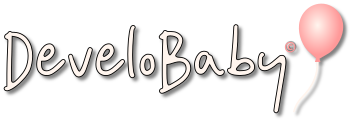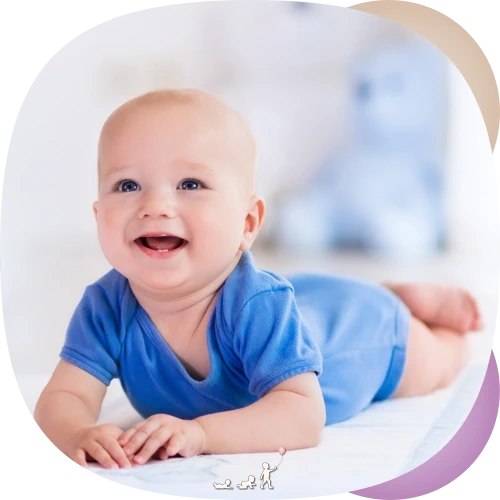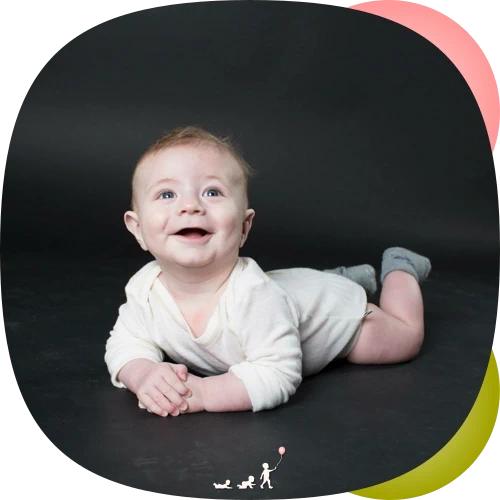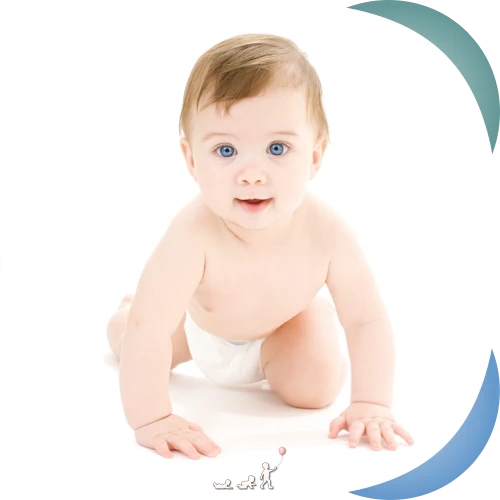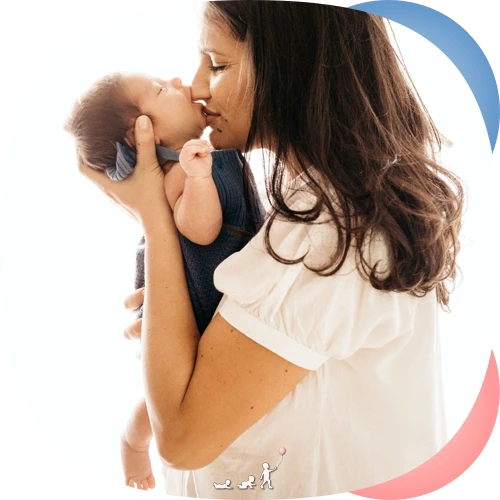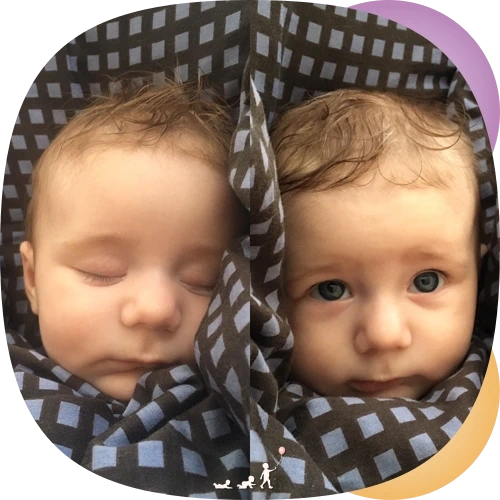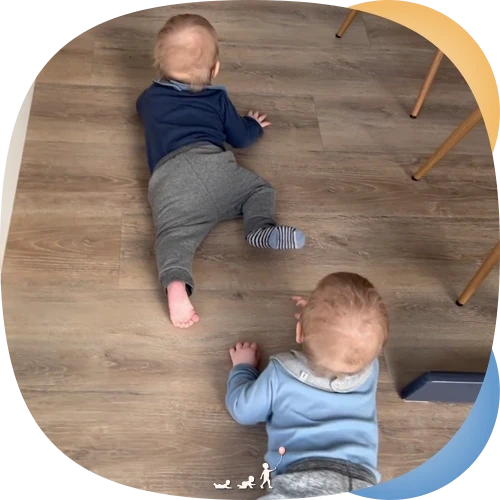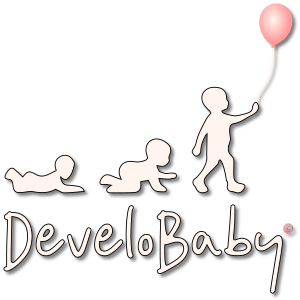Preferred Side and Flat Head
Online Physical Therapy exercise program for babies with a preferred side, banana shape or asymmetrical flat head. The program includes side-specific, easy to follow exercises explained in text and shown on video with real babies. The exercises can be used from newborn and until your baby can roll independently from back to tummy.
på Trustpilot
299,00 DKK
(inclusive of all taxes, VAT and fees)





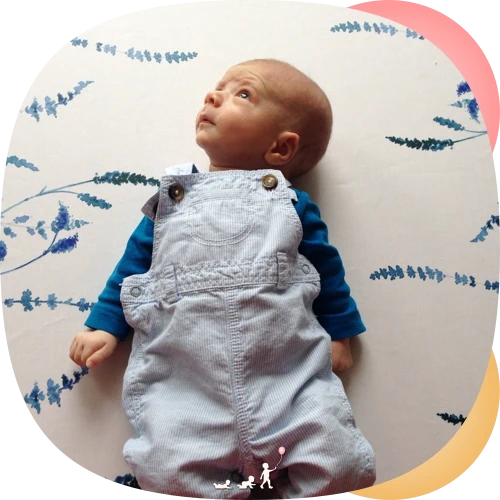
Program description
Developed by Danish pediatric physical therapist Maria Schultz Appelt, this program is for babies who have a preferred side, a banana shape, asymmetrical flat head (plagiocephaly) and/or are asymmetrical in their motor development. The program can be used from newborn and until the baby can independently roll from back to tummy. All exercises have been developed according to current professional standards and best practices and are thoroughly described in text and shown on videos with real babies. All text, images and videos are adapted to the selected preferred side (right or left), so make sure to choose the correct program version (see frequently asked questions).
If you have any questions about the program or are unsure about anything, please send me a message (perhaps including a short video of your baby) via my Instagram @develobaby or email at maria@develobaby.com.
Note: if your baby has symmetrical flat head, I recommend that you consider the program Back Arching and Flat Head.
What is a Preferred Side?
A preferred side means that the baby prefers to use one side of the body more, both for motor and sensory tasks. This means that the muscles on the preferred side are easier for the brain to activate and the baby’s sensory life is stronger on that side.
Once a preferred side is established, it will gradually become stronger if the other side remains unused. This happens quickly because a baby will always choose the path of least resistance. They will not choose to turn the head to the left if there’s less resistance to the right and if smell, sound light etc is easier to process to the right. It’s a simple “use it or lose it” situation!
The treatment for a preferred side is to strengthen the muscles and senses to the difficult side. This is done over time through daily exercises, all of which you find in this program.

What is a banana shape?
Many babies tilt their head to one side and sometimes also bend their whole body that way. They have what’s often called a “Banana shape”. Some people also call it a C-shape or a one-sided fixed lateral flexion. The side on which the body is shorter determines the baby’s banana shape direction, left or right. There is an entire section in this program with the relevant exercises for treating Banana shape.

What is plagiocephaly?
Plagiocephaly is an asymmetrical flattening of the back of the head, which is a very common side effect of preferred side, because the baby lies with the head mostly to one side. The degree to which the skull is flattened varies from baby to baby. Some babies have larger fontanelles (soft spots) and therefore a more malleable skull, while others can have a significant preferred side but not become flat.
If a baby has a preferred side and thus gets more pressure on one side of the skull, it is important to take measures to prevent plagiocephaly. The program also includes exercises and advice both on how to prevent and treat plagiocephaly.

Frequently asked questions to Preferred Side and Flat Head
Related programs
Note: when purchasing two or more programs, a 10% discount is automatically applied. ❤
The latest on Instagram
Follow me on Instagram @develobaby, where I share evidence based motor development knowledge and fun! ❤
Disclaimer
All content on DeveloBaby.com is based on recognized professional standards in Denmark, and you can expect them to be in line with the advice you receive in the public health system. If you find that your child has pronounced sleep or motor challenges, or that there is a lack of effect from the general exercises, I recommend that you make an appointment with me, either in person or online, so that I can customize the program for your child. If your child is unwell, please always contact your health care provider or physician. Read full disclaimer…
